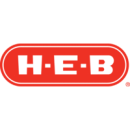
These are tumultuous times for many across not only Texas, but the world over. In our own backyard, some tech companies are stepping up to support areas impacted by uncertainty and sudden change.
“We’ve been coordinating app updates and functionality to better serve our customers and their communities,” said Jon Hsu-Kei, an Android engineering manager at H-E-B, a grocery retailer based in Austin. “The thing I most enjoy about it is the tangible positive impact we are making for communities in Texas to ensure we can continue to feed the state.”
For engineers looking to embrace unique challenges, company cultures and traditions, there are opportunities for engineers at several growing Austin companies.
What they do: More than 50 million people use Fivestars to get rewarded at over 15,000 local businesses.
Fivestars’ tech stack: On the front end, Fivestars uses Nightwatch.js to create expansive end-to-end tests and Sikuli to test integration with Windows-based points of sale. “Our engineering team is doubling down on quality and automation after an extended period of rapid product development,” Director of Engineering Patrick Lucas said. “Our most active microservice is our new Payments API that’s written with the Python 3 Falco API framework and uses PostgreSQL and Peewee ORM. We’ve focused on high test unit coverage for this API so that we can iterate quickly and deploy with confidence that we aren’t going to break our clients. Our microservice architecture leverages Kubernetes and Kafka for internal communication. Our team has open sourced Aladdin, our CLI tool for cluster management.”
Our engineering team is doubling down on quality and automation.”
Most interesting project: Project Pegasus. “This bold initiative was conceived by our hardware team and the goal is to completely rebuild our in-store hardware from the ground up,” Lucas said. “We will be moving away from retail tablets inside a custom case to a fully custom solution based on a single-board computer. This will allow us to better control our supply chain and gives us a lot of creative freedom for how the product will look and feel.”
What makes the team unique: The diversity of backgrounds on the team. “I’m most proud of our track record on mentoring and growing engineers,” Lucas said. “We’ve grown a team member into a senior engineer who started in the sales org and a team member whose previous career was in physics academia and a few others who had no engineering experience at all. This strength also makes for a really successful intern program where we have a very high conversion rate to full-time employees.”
What they do: SailPoint is an identity governance solution provider for enterprise companies.
SailPoint’s tech stack: “For our client applications, we utilize Angular, TypeScript and React,” Nji said. “To power our UI/UX, we built a scalable middleware comprised of a collection of microservices.
“For inter-service communication, we employ technologies such as Apache Kafka and Redis. For persistence and caching, we apply a polyglot approach using a range of database technologies such as PostgreSQL, MySQL, Amazon DynamoDB, Neo4j and Redis, with the underlying storage mechanism best selected to match the usage model at hand.
“Powering the data analysis, mining and AI in our SailPoint Predictive Identity platform is an infrastructure based on Elasticsearch and Cassandra. It leverages tools such as TensorFlow, Apache Flink and Apache Airflow for predictive analysis and intelligence. These technology choices allow us to build a scalable approach enhanced by accurate logging, metrics and observability tools such as Kibana and Prometheus.”
Most interesting project: “I am working on the challenge of extracting our business logic into an orchestration layer, which would allow business workflows to easily adapt toward our tenant needs. This layer will also provide visibility that will aid in understanding and sustaining the product. To achieve this critical goal, we have chosen Camunda Zeebe to validate our approach and assumptions. What has excited me most about this project is the ability to fully reverse-engineer and model an internal business process, creating a visual and executable artifact along the way.”
Something unique about their engineering team: “We are predominantly a local engineering team co-located with all other critical business and engineering functions, including product management, DevOps and site reliability engineering. This localization creates the advantage of being able to continually consult and bounce ideas off local engineers. It allows us to get a job done efficiently while adhering to best practices and idea exchanges.”
What they do: H-E-B is a family of grocery retailers that has an Austin-based digital arm, which supports its operations.
H-E-B’s tech stack: “On the Android team, we are leveraging the capabilities of Android Studio to make writing, debugging and testing Kotlin code a breeze,” Hsu-Kei said. “From an implementation perspective, we utilize Android architecture components to implement reusable, robust and maintainable code. To ensure our code is testable, we utilize Dagger 2 for dependency injection. We also have deep integrations with Firebase for messaging, analytics, feature toggling and testing. Finally, when it is time to ship, we have a full CI/CD pipeline in GitLab that automates our entire release process all the way to the Android Play Store.”
Most interesting project: “The most challenging project I am working on is helping support our store partners with the added strain that COVID-19 has put on our stores. We’ve been coordinating app updates and functionality to better serve our customers and their communities. The thing I most enjoy about it is the tangible positive impact we are making for communities in Texas to ensure we can continue to feed the state.”
Something unique about their engineering team: “The focus and commitment our team has to not only our customers, but our H-E-B partners and communities as a whole. We always consider the impact that our decisions have on Texans as well as the people who have to implement those decisions. This commitment is one of the primary traits that drew me to H-E-B.”
What they do: ScaleFactor offers business owners an automation-based solution to optimize their financial bookkeeping operations.
ScaleFactor’s tech stack: “Our services are all cloud-based and we use a mix of Ruby, Ember, Postgres and others on both PC and Mac computers,” Bushong said. “We use a directory-as-a-service solutions tool for single sign-on to enforce multi-factor authentication and password policies for all connected apps. The tool has been flexible enough to even support patch management for our endpoints. It is the Swiss Army knife of our security kit and has become my favorite tool.”
Most interesting project: “We are working on increasing our patch management. As with many small to medium-sized businesses, budget is a constant consideration and sometimes a perceived barrier to security. With enough creativity and persistence, a solution is always feasible that will solve all of a business’s needs.”
Something unique about their engineering team: “We have a cybersecurity spokesdog, a precious pug named Sukha, who is owned by one of our senior technical accountants. We use the expression ‘Sukha says’ across our internal awareness materials, which cues people in on a security task they need to complete.”
What they do: Evernote develops a note-taking and productivity app to help users stay organized.
Evernote’s tech stack: “I’m focused on the front end and mobile, and I like the fact that we are writing everything in React and React Native,” Gomez said. “They give us a unified language and framework across several teams and products. I am also impressed with our use of Iterable and other tools to orchestrate user journeys, experiments, A/B testing and push notifications to keep our users engaged with our software. Additionally, we’re using Electron for desktop apps on Windows, Mac and potentially Linux, which is awesome.”
Most interesting project: “Our mobile team is currently working on launching new versions of our mobile clients. They’re all being re-written in React Native using several of our latest pieces of architecture, including a new version of the Evernote editor. The overall tablet experience of the new Evernote mobile app has presented some very interesting challenges in regards to layout behaviors, emerging split-screen tablet paradigms and existential UX questions on how editing a note should behave. The fluidity of modern tablet UI presents fun engineering challenges, and I’m enjoying solving each one.”
Something unique about their engineering team: “One of the most impressive characteristics of my team is the organic way we have grown and how individuals have gravitated toward key areas of interest to them. Through this natural formation, our engineering manager has achieved an ideal relationship with devs, who get to work on the items that excite them most or learn in areas they want to.”
What they do: 8am (Formerly AffiniPay) is a payment solution provider for businesses in legal, psychology and accounting industries.
8am (Formerly AffiniPay)’s tech stack: “Our teams are using some of the latest technologies and interesting architecture like microservices, event-driven messaging, Kubernetes, Helm, Kafka, Scala, Java, React, Ruby on Rails and various JavaScript libraries,” Kattawar said. “We’re pushing hard to get all of our services containerized and deployed within our Kubernetes infrastructure.”
Most interesting project: “Generating simple, easy-to-understand statements for our customers. Our microservices aggregate event data from several services to generate statements based on customer deposits, refunds, usage and time. It’s taken a lot of work to define what needs to be included in the statements. We need to ensure we’re gathering the right data and make statements accessible throughout the product and APIs.”
This feature is important to our customers, and I think the most rewarding part is knowing that all this hard work and coordination will help make our customers’ lives easier.”
Something unique about their engineering team: “Because we’re a payments platform, we’re hyper-aware that the work we do directly affects our customers’ ability to get paid. While someone on the team is always up for a foosball or a ping pong break — when we’re working in our office, that is — we’re also vigilant about making sure that the development choices we make ensure our platform is always delivering value to our customers, around the clock.”











